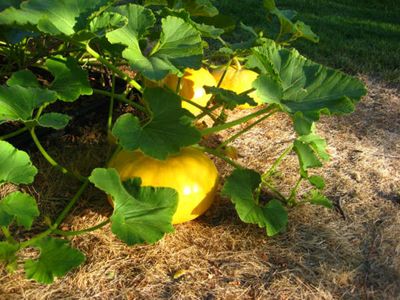Gardening: Push for permaculture
Garden design, practices are key parts to embracing a regenerative philosophy

With the start of a new year, making resolutions to improve one’s health and well-being is an annual tradition for many of us.
This year, why not embrace the philosophy of permaculture?
Permaculture, coined in the 1970s by Australians Bill Mollison and David Holmgren, comes from the words “permanent agriculture” and “permanent culture.”
Recently, Dave Boehnlein and Paul Kearsley of Bullock’s Homestead on Orcas Island held a workshop in Spokane to teach what permaculture is all about.
According to Kearsley, permaculture is “based on a design of systems that provide the basic human needs of air, water, food, community and shelter.”
It’s a matter of assessing these systems – whether they are part of a garden, a home or a business – and making them regenerative so they are mutually beneficial to humans and the planet.
“It centers around three main ethics: care of the planet, care of people and sharing the surplus,” Kearsley explains.
The first ethic stresses the importance of developing a healthy relationship with our planet so it will sustain us and vice versa.
The second ethic is based on the fact that humans are very social. “We do well when we work together,” Kearsley says.
The third ethic involves how we handle our resources. Whether it’s a bounty of plums from the garden or the knowledge that we have, sharing is a benefit to all.
“Permaculture is solution-oriented,” Boehnlein adds, “no matter what field you’re in.”
To accomplish these ethics, permaculture is based on a set of design principles which can be used for many different applications – for example, the design of an energy-efficient home or a commercial building.
But at the heart of permaculture is the issue of sustainable food production. So let’s look at garden design and gardening practices to better demonstrate the concept.
When designing a new vegetable garden, look for the sunniest area, as vegetables need a minimum of six hours of sunlight each day to grow and produce.
Make sure there is a water source close by so it won’t require extra labor to bring it to the garden. Site your composting system in an easy-to-reach location in order to add materials and maintain it.
Take advantage of the resources around you in order to be successful with your garden. Look to people with gardening experience to guide you through the process of growing your own food.
Conversely, look for opportunities to share your resources or skills with others. An excellent example of this are the community gardens located throughout Spokane where neighbors and friends pool their resources to create productive gardens.
Use organic gardening methods at all times. This means avoiding the use of chemicals and pesticides that are harmful to humans, beneficial insects, the soil and the environment as a whole.
Instead, focus on building up the soil with natural amendments like leaves and compost which will in turn grow healthy plants that are more resistant to insects and disease. Consider planting one edge of your garden with plants that will attract beneficial insects and pollinators. In addition to helping your garden grow, it increases diversity.
Speaking of diversity, consider growing more than one variety of each crop. That way, if one variety fails, you will still have a harvest from the others.
If you are a new gardener, start small. It’s far easier to keep up with a small first garden than a large one, and a better way to learn from your experiences.
As Boehnlein points out, “You can learn the same lessons from a $5 mistake as you can from a $1 million mistake.” And you are less likely to become discouraged and overwhelmed.
One of the foundations of permaculture is to have a high yield with low input. This means having a productive garden by planting intensively but in an energy-efficient way.
For example, instead of growing corn in long single rows spaced three feet apart, plant the corn in tight blocks with the plants spaced about a foot apart. This will increase pollination of the plants, which will produce more ears of corn while cutting down on the amount of area you need to weed, cultivate and water.
“It’s important to get a yield to make the energy expended worthwhile,” Boehnlein explains.
Conserving water should be another goal for gardeners. Using rain barrels connected to rain gutter downspouts is an easy first step to watering your garden from an alternative source.
Another way to conserve water is through the use of mulches around the plants. Mulches can include a heavy layer of leaves, untreated grass clippings, chopped-up plant material or weed-free straw. This impedes weeds – another energy-saver – while helping the soil retain moisture.
By utilizing some of the examples above for your garden this year, you are already stepping into the world of permaculture.